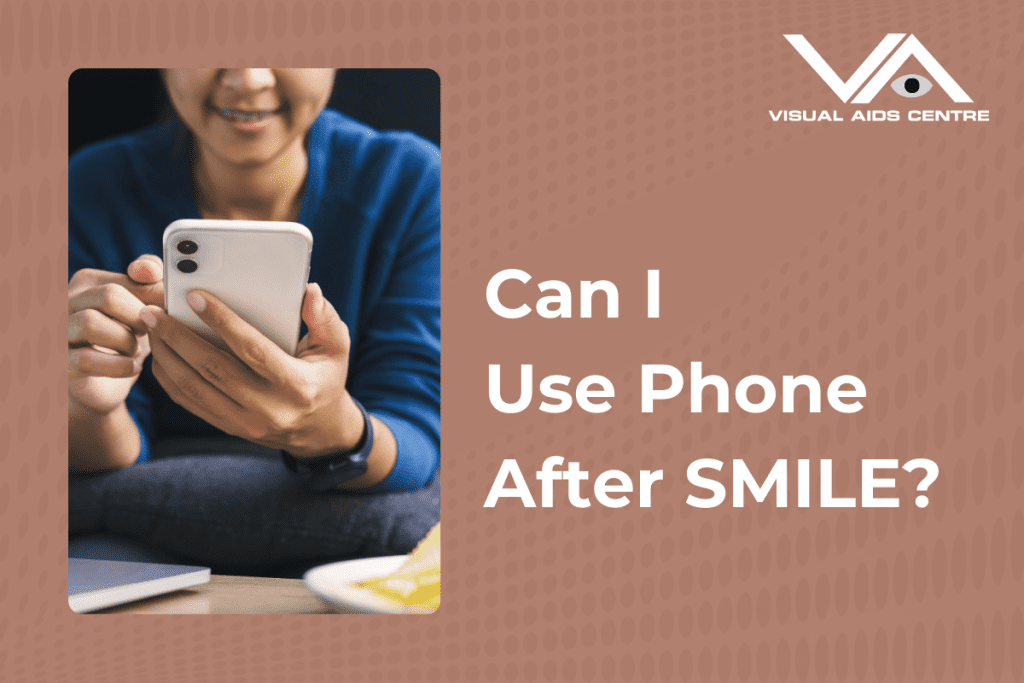Table of Contents
ToggleSMILE means Small Incision Lenticule Extraction, a refractive procedure designed to treat many refractive errors like myopia, hyperopia, presbyopia, and astigmatism.
One’s vision depends on one’s cornea and lens, which focus on the clear image of the world before the retina. The error happens with the bending of light rays to form a sharp image on the retina. The cornea and lens perform the refraction. Here is what you need to know.

Why is SMILE more effective than LASIK?
SMILE is considered more effective than LASIK because SMILE needs only one laser surgery compared to LASIK’s two laser platforms.
Is SMILE a better alternative than LASIK?
Yes, we can say that SMILE is a better alternative than LASIK in many ways, which are discussed below. In 2007, an alternative LASIK method was reintroduced, known as FLEx which means Femtosecond Lenticule Extraction, which was only for patients with extreme myopia. Doctors have seen much more improvements in the scan modes and energy parameters, providing visual recovery times with notice with effective results similar to LASIK.
By following the FLEx procedure, doctors have developed a better surgery than LASIK and FLEx, which was later known as SMILE, which is designed to and involves a small 2-3 mm. Incisions are used to allow the extraction of the entire corneal lenticule without any need to create a flap. There is a similarity in the early stage of SMILE, which is similar to LASIK; both surgeries develop some sort of similar effects. But then there were some benefits of SMILE surgery, such as the fast recovery of the posted dry eye, reinnervation of the corneal nerves, and a potential biochemical advantage. This procedure might be an upcoming option for more patients as it undergoes refractive surgery and also due to its minimally invasive techniques and promising outcomes.
When was this surgery first started?
The procedure of the SMILE surgery began in September 2011. It was established in various locations like Europe, China, and India. After getting approval from the FDA in the United States, this Survey in 2016 forced spherical myopic corrections; after days, the support for the compound myopic astigmatism was given in October 2018.
A meta-analysis of randomized control trials and comparative studies found that the SMILE and FS LASIK by Zhang et al. have discovered that there is no such difference between them in many areas except the corneal sensation and tear breakup time with favor SMILE.
Why is SMILE better than LASIK and PRK?
As per research and discovery, it can be seen that SMILE is better and superior to LASIK and compatible with PRK. Because preserving corneal biochemical properties of corneal hypothesis and corner resistance is the factor of the surgery.
But also, here’s a random sample that shows controlled trials between waves from LASIK and SMILE, showing that WGF LASIK was superior in achieving better low-contrast visual acuity and unconducted visual acuity.
Can the patient use the phone or any digital device immediately after the surgery?
No, the patient cannot use any digital device after the SMILE surgery directly because, after all, SMILE surgery is eye surgery so they can accept it, and it will be common to have a blow revision for a few days.
Once vision will progressively get clear after a few weeks or months. So unnecessary stress to the eye will be very uncomfortable for the look as the surgery was immediately done after using any digital device will let the recovery take more time. Even some doctors suggest going on for one week without excessive screen use.
The recovery period from eye surgery is critical. Eyes must get strained or dry during this recovery period. Most use of digital devices is restricted to 24 hours.
Therefore most people are advised to slowly increase the duration of using this phone after the first two or three weeks of the surgery. This restriction is applied to the other screens as well.
Using the phone immediately after the procedure can cause strain to the eyes. And that negatively affects the healing process. Keeping eyes away from the screen will prevent straining, getting tired, and drawing out. After the first 24 hours, eyes should be strong enough to handle a little screen time.
Even after the first 24 hours following a smile, one should take it easy when looking at electronic devices. So it is still a recovery process, so it’s a good idea to avoid spending on scrolling social media or any platform that’s on an electronic device.
Instead, use the phone for a few minutes at a time throughout the day and monitor how the eye pills. If not using any of this comfort or straining, take a break and allow your eyes to rest.
Some of the methods to follow for fast recovery while using a screen.
- The 20-20-20 rule is a process or method followed after the smile surgery or any eye surgery. It is an excellent method to check the screen time for the eyes and recovery time. This rule states that for every 20-minute screening, look at something about 20 feet away for about 22 seconds. This helps prevent training and ensure proper healing after dismal surgery.
- Getting the ice moisturized and lubricated is also essential to healing from smile surgery. When one stays at a screen for a prolonged period, eyes don’t blink as often as they should. Because these eyes can be strained, get irritated, dry out, and blink frequently, moisturizing eye drops can help keep the eyes moisturized.
- Between the eyes and the screen should be enough length for, like, 42-76 CM or 16-30 inches. Even many people crack 52-60 CM aur 22-60 inches.
- The best point of the screen should be 10 to 20 degrees from the person. And one should take a seat that empowers one to sit at a ligament point and distance from the phone screen.













